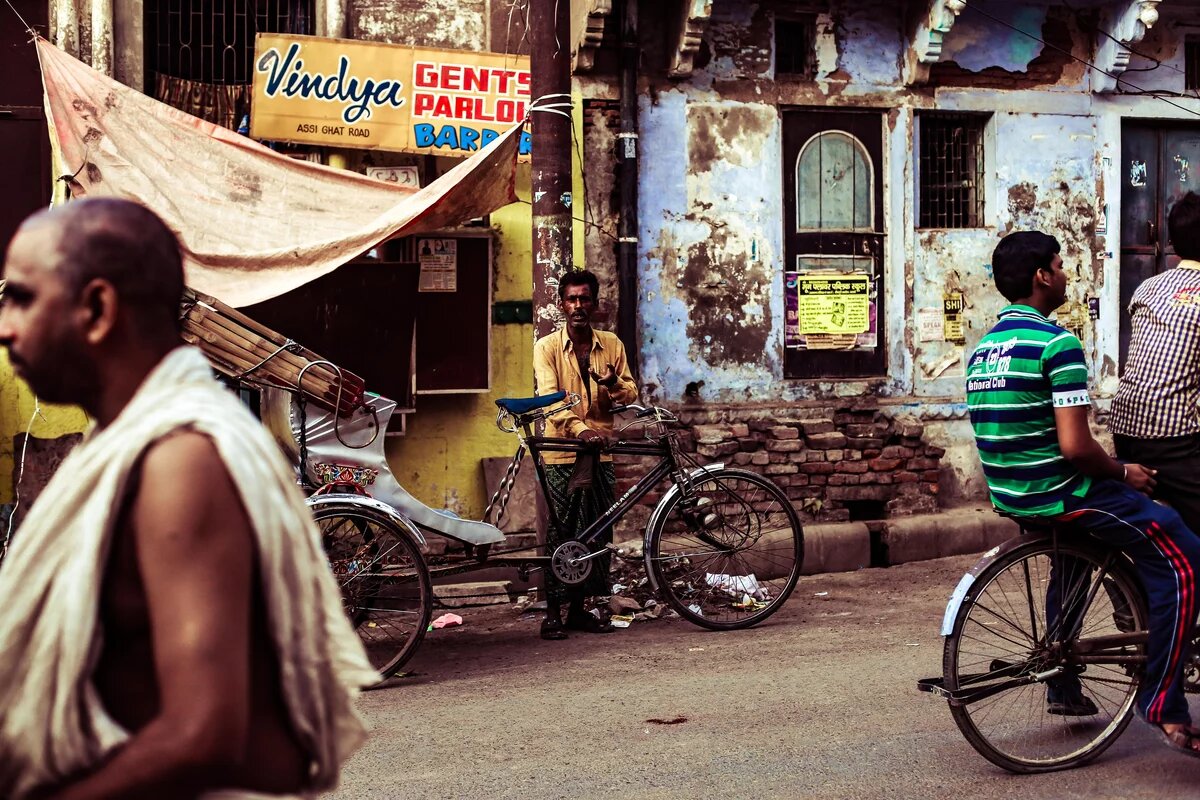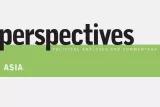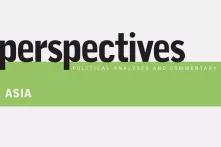For more than a decade, fast-growing India appeared to be well on the path to become another superpower. However, a considerable part of India’s population has remained poor; India’s growth lacks social inclusion. The debate is not new, but it is gaining increased attention in the current economic downturn, with elections pending for spring 2014. ➢ Find recent publications, videos and podcasts on Asia!

Once upon a time, many Indians, and many people in the rest of the world, believed that India was well on its way to become one of the next superpowers. In fact, this time was only a few years ago.
Since the era of liberalization in India began in earnest in 1991, the country has experienced consistent rates of growth of its gross domestic product (GDP) of around 6-7.5% p.a. and exceeded 9% in several years after 2005. For many years, India boomed. Well-known key drivers have been sectors such as information technology and services, for example the business process outsourcing (BPO) industry that established call centres for customers world-wide. India became a major destination for international investments, with German chemical companies, service (insurance) industries and car manufacturers prominent among them. Vice versa, Indian companies appeared seriously on the scene as international players, even in Europe: In an ironic twist to the old colonial relationship, the century-old Tata Industries bought British luxury car manufacturer Jaguar. Perhaps less fancy, but more sustainably, the Indian renewable energy multinational Suzlon (founded only in 1995, as a textile company with just 20 members of staff) bought REPower, a major German wind power turbine manufacturer.
“Incredible India” has remained not merely an advertising motto for the tourist industry, but seemed to suggest far larger perspectives. Expectations rose about India’s international role and as a member of the BRICS group of leading emerging economies. Many believed that India appeared to be on China’s heels; on a development path that was perhaps a bit slower than China, and certainly more chaotic, but nonetheless on the right path, and with India’s democratic political system and its widespread use of the English language even having some strategic advantages over China.
India’s Development Model in Crisis?
To be sure: All through the boom years, there have always been those in India – and this is by no means a small group – who did not subscribe to the beautiful narrative of “India Shining”, the slogan with which the then governing Bharatiya Janata Party (BJP) went into the election campaign in 2004. Substantial groups of people have felt excluded from India’s growth, or at least felt that they were unable to participate sufficiently. As a consequence, the electorate removed the BJP from power in 2004. The United Progressive Alliance (UPA) coalition, led by the Congress Party under Prime Minister Manmohan Singh, re-elected in 2009, has continued a liberalizing economic reform policy (though it is widely seen to have come close to standstill in more recent times), while adding important social security programs to it. The most prominent of these are the National Rural Employment Guarantee Scheme (NREGS) which has been implemented since 2006, and the recent passing of the Food Security Bill of 2013, which will provide heavily subsidised food grains to 67 percent of the entire population.
Today, however, with general elections expected for April or May 2014, the entire Indian development path suddenly appears to be in crisis.
- There is an acute economic downturn: The GDP growth rate fell below 5%, the Indian Rupee lost 18% of its value against major foreign currencies since early 2013, and figures for manufacturing and foreign investment are going down.
- There is a widespread perception of political stagnation: The UPA government is tainted by large-scale corruption scandals, and it appears to have lost the capacity to drive reforms – as shown most markedly by the furious conflicts resulting from a 2012 legislation that allowed international multi-brand retailers (such as Walmart and Metro) to enter India’s retail trade.
- And there is more fundamental questioning of the direction of the Indian development and growth path. Has India’s economic growth been “inclusive”? Has it brought people out of poverty? And what type of development has growth - defined primarily as GDP growth - brought about?
The current economic downturn, brought about in part by international factors and affecting other BRICS economies as well, is likely to remain a temporary dent: Positive fundamentals of the Indian economy – such as its huge market size and the country’s youthful demographic structure – remain valid, and a new government in power from mid-2014 is likely to have greater capacity to make strong economic policy decisions. Thus it is very probable that the economy will recover from its current slump, though it remains open (and will depend on economic and social policies undertaken) whether it will return to the high GDP growth rates of earlier years.
“Growth Matters” vs. “Uncertain Glory”
The third question, however, is far more difficult to answer, and it is extensively debated in India today. India is a country with a strong debating culture, and the vast number of print and electronic media contains much commentary on this every day. Four of India’s leading economists recently published two books that are widely acknowledged to represent the two predominant positions in the ongoing big debate about development, growth and inequality in India.
Jagdish Bhagwati and Arvind Panagariya take a liberal (some may call it “neo-liberal”) stance in arguing “Why Growth Matters”. They maintain that economic growth – measured by GDP – constitutes the foundation for any meaningful development and the reduction of poverty. Only on the basis of fast growth, they say, redistributive reforms for poverty alleviation and human capital / capacity building become viable.
Bhagwati & Panagariya argue that India’s economic growth since the 1990s has indeed substantially reduced poverty: The proportion of the poor population, according to Planning Commission figures, fell from 44.5 (1983) to 27.5 (2004-5) per cent; taking population growth during this period into account, they estimate that 187.5 million people have left the status of poverty (at least in its most extreme form) in the same period.[1] Bhagwati & Panagariya then identify persistent impediments to India’s further growth: an inflexible labour legislation operating against the sizing-up of companies; the difficulties of land acquisition for public and private industries and housing; the poor state of public infrastructure, most dramatically so in the field of power supply.
While Bhagwati and Panagariya also argue for innovation and reform in the social sector, for example by favouring competition and privatization in the educational services, redistributive reforms constitute a clearly subordinate[2] rank in their list of reform priorities. Within India’s current political spectrum, their position is broadly identified with (or seen to support) the BJP and its prime ministerial candidate for 2014, Narendra Modi, who as Chief Minister of Gujarat has overseen a rapid rise of industrial and export-oriented development in a state that many acknowledge to be well-governed and with low levels of corruption.
By contrast, Jean Drèze and Amartya Sen look at the Indian growth story of recent years as “An Uncertain Glory”. Their overall perspective could perhaps best be called a “social-democratic” one.
For Drèze & Sen, India’s main contradiction is the persistence of poverty combined with rising inequality, despite rapid economic growth. While the measurement of poverty figures in India remains notoriously difficult, it is clear that even using the same Planning Commission figures as Bhagwati & Panagariya (above), the absolute number of Indians in poverty has far less reduced than the high GDP growth may suggest, if at all. At least 270 million Indians remain in abject poverty, and many more millions are just beyond that threshold.
In its record of poverty reduction, India falls far behind China, while at the same time, inequality has rapidly grown. A significant new middle class has emerged, even though its consumption is still on a substantially smaller scale than that of Western middle classes, with the motorcycle or small car, and perhaps a modern flat as the family home, forming the core of aspirations. A growing number of super-rich Indians has fuelled the societal imagination – and the scorn and anger of intellectuals. And beyond the pattern of inequality which is common world-wide, in India, traditions of cast oppression are even reproduced in the modern society and economy, even though they are countered by affirmative action policies that India has given constitutional guarantees to.
Instead of mere economic growth, Drèze & Sen see the developmental process primarily as the need to grow human capacity, and on the systems that enable and help to provide it: education, health, and social support services. They point to the severe deficits that make India risk wasting the “demographic dividend” it currently has: poor education (except in a few top-level institutions) as well as severe health and nutrition issues that, besides the death toll, make substantial parts of the population less productive than they could be.
Drèze & Sen stress the need for systematic government health, educational and social sector policies. For example, they strongly argue in favour of social support programmes such as NREGS, the cash-for-work programme which has been criticized by liberals for, among other reasons, its cost implications, but which in many parts of India has indeed led to rising incomes for poor rural people, especially for women. Drèze & Sen look positively at Kerala, a state in South India which has achieved a high level of human development (by investing in education and health) despite rather low GDP growth rates. Within India’s mainstream political spectrum, Drèze & Sen are seen as standing closer to the Congress Party positions, though they likely would not want to be seen as supporting the current government directly.
More Debates, Loose Ends
The debate between India’s master economists currently receives much public and media attention. It has become a slugfest that, at times, wrongly tends to reduce both sides to stereotypes: While Drèze & Sen are sometimes criticized as being “against growth” (which they clearly are not), Bhagwati & Panagariya are viewed as representing a kind of market extremism (whereas they clearly support well-designed social support interventions). Personal animosities have entered newspaper contributions by the lead authors themselves. Overall, however, the differences are more a matter of priorities in public policy. None of the two sides is seriously considering a radical turning away from the basic policy of liberalization and economic opening, but also social support for disadvantaged groups, which India has been pursuing for some years now. Neither of them also questions India’s democracy as a possible source of inefficiency, delay, conflict and outright barrier to development – an argument that one may come across in India from time to time, though few would dare to argue this way in public.
Sometimes, the fight is also about the pros and cons of certain very practical policy propositions, informed in part by social and economic philosophy, but in part also by an impressive number of empirical research studies that are conducted to evaluate often very specific aspects of the problem. One such case is the issue of cash transfers for social support, a system that is just about to be expanded (as against the more traditional Public Distribution System that sells subsidized food to the poor on the basis of “ration cards”): Bhagwati & Panagariya in general prefer direct cash transfers to recipients as a means to ensure efficient distribution and to reduce corruption, whereas Drèze & Sen maintain that cash payments should not be introduced just to relieve the state from its duty to provide quality services. There are many more such debates. While the basic economic philosophies behind them are, of course, of a global kind, and while experiences from abroad are brought in sometimes (such as the conditional cash transfer schemes introduced in Brazil), the debates overall retain a thoroughly Indian flavour, and arguments about particular policies being applied (or rejected) elsewhere in the world do not feature very prominently.
Of course, the four master economists discussed here do not cover the entire spectrum of Indian public opinion on economic and social policy. There is a considerable political spectrum beyond them, especially on the left of Drèze & Sen, which remains fundamentally critical of the policy of liberalization. It views the opening up to international trade and investment as dangerous for the poor, as well as for India’s capacity to pursue a sovereign policy. Some of these voices come from the traditional left, represented by different political parties who claim the term “Communist” for themselves; others represent a more modern, independent criticism of globalization that finds quite some support among civil society organizations, farmers’ associations and movements etc.
Especially the latter groups can rightly point to one fundamental weakness of the lines of argument presented by both Bhagwati & Panagariya and Drèze & Sen alike: All these master economists, in their thinking about “development” and economic policy, have rather little to say about the agricultural sector. This is somewhat surprising in – but perhaps also characteristic for – a country where 70% of the population still lives in villages, and half of it is employed in the agricultural sector. Thanks to an irrigation-based Green Revolution strategy pursued in the Punjab and some other parts of the country since the 1960s, India today is largely self-sufficient with regard to its basic food needs. But the input-intensive Green Revolution-style agriculture is reaching ecological limits, while large parts of India’s rural world are in distress, as agriculture remains rain-dependent, is apparently ever more affected by drought, and lacks marketing and extension systems, as well as policy support.
Overall, developmental thinking in India seems to view the rural world – at least once basic foods needs are secured – primarily in terms of a labour reserve, also noting that urban development in India already today struggles to cope with rural-urban migration. Indeed, a common criticism (voiced prominently by economists such as Jayati Ghosh) of India’s economic development is one of a “jobless growth”. In China and other East Asian countries, a large number of migrants were absorbed by a booming low-wage export-oriented manufacturing sector. Apart from a few exceptions, such as the Tamil Nadu garment industry, the same is not happening in India. In order to solve this problem, Bhagwati & Panagariya advocate liberalization of the labour market and a more export-oriented policy, all of which should create more industrial jobs; Drèze & Sen favour securing the survival of the rural world and relieving distress migration by means of the NREGS cash-for-work program. However, neither of them systematically addresses the development needs of India’s rural world, and neither of them seems to have a vision for the future of rural India.
Another loose end is the question of sustainability. Neither Bhagwati & Panagariya nor Drèze & Sen take much notice of the environmental consequences of India’s GDP-focused model of economic growth – and of the limits to growth that exist in terms of the use of resources such as land, water, clean air, etc. India is getting closer to its ecological boundaries, and some of them have already been overstepped in parts of the country. While environmental and rural activists (farmers as well as members of indigenous communities who live in mining areas) are pointing to these problems since many years, a more comprehensive questioning of the very fundamentals of a GDP growth-based model of economic development is only emerging recently, for example by Ashish Khotari. A debate on the “limits of growth” has not yet found many contributors in an India that, despite impressive GDP growth figures, continues to be confronted with mass poverty and growing inequality. Even India’s master economists dominating the public debates around development would be well advised to take greater note of these limitations.
References:
Bhagwati, Jagdish & Arvind Panagariya, 2013. Why Growth Matters: How Economic Growth in India Reduced Poverty and the Lessons for Other Developing Countries. New York: Public Affairs.
Drèze, Jean & Amartya Sen, 2013. An Uncertain Glory: India and its Contradictions. London: Allen Lane.
[1] Bhagwati & Panagariya 2013:35. The latest Planning Commission data published in July 2013 (using a different type of measurement) note a further reduction in India’s poverty rate to 22%, from an even higher poverty rate of 37.2% in 2004-05, see http://www.livemint.com/Politics/1QvbdGnGySHo7WRq1NBFNL/Poverty-rate-down-to-22-Plan-panel.html .
[2] Ü-Hilfe: “belegen … einen klar nachrangigen / abgeschlagenen Platz in ihrer Prioritätenliste”



